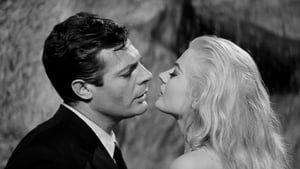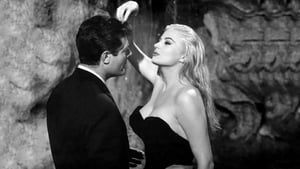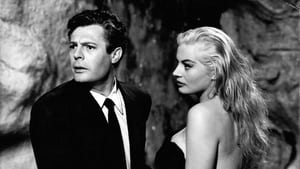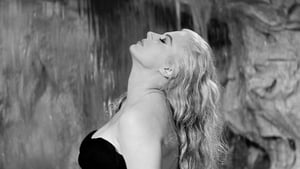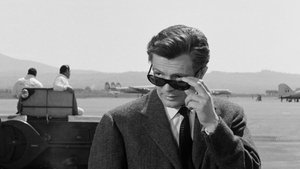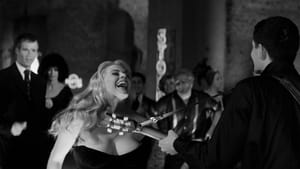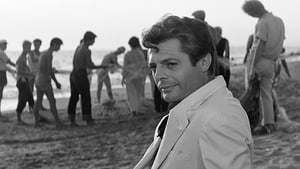Video Sources 0 Views
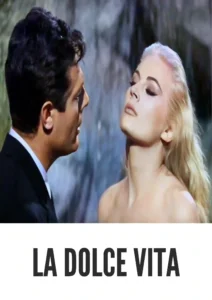
Synopsis

Step into the dazzling yet disillusioned world of Federico Fellini’s La Dolce Vita, a landmark of Italian cinema from 1960, now exquisitely colorized to bring its iconic scenes to life. This film, directed by the visionary Federico Fellini, paints a portrait of Rome’s high society, blending satire, drama, and profound introspection. Ideal for cinephiles and those seeking a taste of cinematic artistry, this HD download offers a revitalized viewing experience of a timeless classic. Also known as The Sweet Life, this film explores themes of excess, fame, and the search for meaning in a world obsessed with pleasure.
La Dolce Vita follows Marcello Rubini (Marcello Mastroianni), a journalist navigating the intoxicating world of Rome’s elite. Set against the backdrop of opulent parties, scandalous affairs, and the relentless pursuit of fame, Marcello searches for meaning and fulfillment. He drifts through encounters with celebrities, intellectuals, and socialites, each interaction revealing the superficiality and moral decay beneath the glamorous facade.
As Marcello becomes increasingly entangled in this decadent lifestyle, he grapples with his own disillusionment and existential angst. The film captures the frenetic energy of Rome’s nightlife and the pervasive sense of emptiness that haunts its inhabitants. Through a series of episodic vignettes, Fellini explores themes of love, loss, faith, and the human condition. Ultimately, La Dolce Vita is a poignant and provocative reflection on the seductive allure and spiritual emptiness of modern life, offering a glimpse into the complexities of the human soul.
The film boasts a stellar cast of actors who bring Fellini’s vision to life:
-
Marcello Mastroianni as Marcello Rubini
-
Anita Ekberg as Sylvia
-
Anouk Aimée as Maddalena
-
Yvonne Furneaux as Emma
-
Alain Cuny as Steiner
La Dolce Vita transcends traditional genre classifications, blending elements of Italian neorealism, drama, and social satire. Its episodic structure and focus on character development make it a unique and compelling cinematic experience. Often considered a masterpiece of art house cinema, La Dolce Vita remains a significant and influential work.
Released in 1960, La Dolce Vita marked a pivotal moment in Federico Fellini’s career, solidifying his status as one of the world’s most innovative and influential filmmakers. The film was produced during a period of significant social and cultural change in Italy, as the country transitioned from post-war reconstruction to economic prosperity. La Dolce Vita captured the zeitgeist of the era, reflecting the growing sense of disillusionment and moral ambiguity that accompanied Italy’s rapid modernization. The film’s daring exploration of taboo subjects and its unconventional narrative structure challenged cinematic norms and paved the way for a new wave of Italian cinema.
This colorized version of La Dolce Vita has been meticulously restored using state-of-the-art digital technology, enhancing the visual impact while preserving the film’s original artistic integrity. The colorization process involved careful analysis of the original black and white footage, with experts using advanced algorithms to select appropriate colors for each scene. The goal was to enhance the visual experience while remaining true to Fellini’s artistic vision. This painstaking process breathes new life into the characters and settings, making the story even more accessible to modern audiences. While the decision to colorize classic films remains a topic of debate, it introduces these cinematic treasures to a broader audience, ensuring their legacy for future generations.
-
: Federico Fellini
-
: Federico Fellini, Ennio Flaiano, Tullio Pinelli, Brunello Rondi
-
: Federico Fellini, Ennio Flaiano, Tullio Pinelli
-
: Otello Martelli
-
: Leo Catozzo
-
: Riama Film, Gray Film
-
: Astor Pictures
-
: 174 minutes
-
: MP4
-
: HD (1080p)
-
: Compatible with most devices, including smartphones, tablets, computers, and smart TVs.
La Dolce Vita (1960) is widely regarded as a cinematic masterpiece, celebrated for its innovative storytelling, stunning visuals, and profound themes. The film won the Palme d’Or at the 1960 Cannes Film Festival and has been praised by critics and audiences alike for its insightful portrayal of modern society. As a culturally significant and artistically groundbreaking film, La Dolce Vita continues to inspire and provoke discussion, cementing its place in the pantheon of cinematic classics.
-
: What is La Dolce Vita about?
-
A: La Dolce Vita is a drama film about a journalist navigating the glamorous and decadent world of Rome’s high society.
-
-
: Is La Dolce Vita (1960) a well-known Fellini film?
-
A: Yes, La Dolce Vita is one of Fellini’s most famous and critically acclaimed works, renowned for its innovative storytelling and profound themes.
-
-
: Is this version of La Dolce Vita colorized?
-
A: Yes, this version has been professionally colorized to enhance the viewing experience.
-
-
: What makes La Dolce Vita interesting for film enthusiasts?
-
A: La Dolce Vita offers valuable insights into Federico Fellini’s artistic vision, showcasing his innovative use of imagery, symbolism, and character development.
-
-
: What is the download format?
-
A: The download format is MP4, which is compatible with most devices.
-
-
: What resolution is the download?
-
A: The resolution is HD (1080p), providing a high-quality viewing experience.
-
Experience La Dolce Vita Today!
